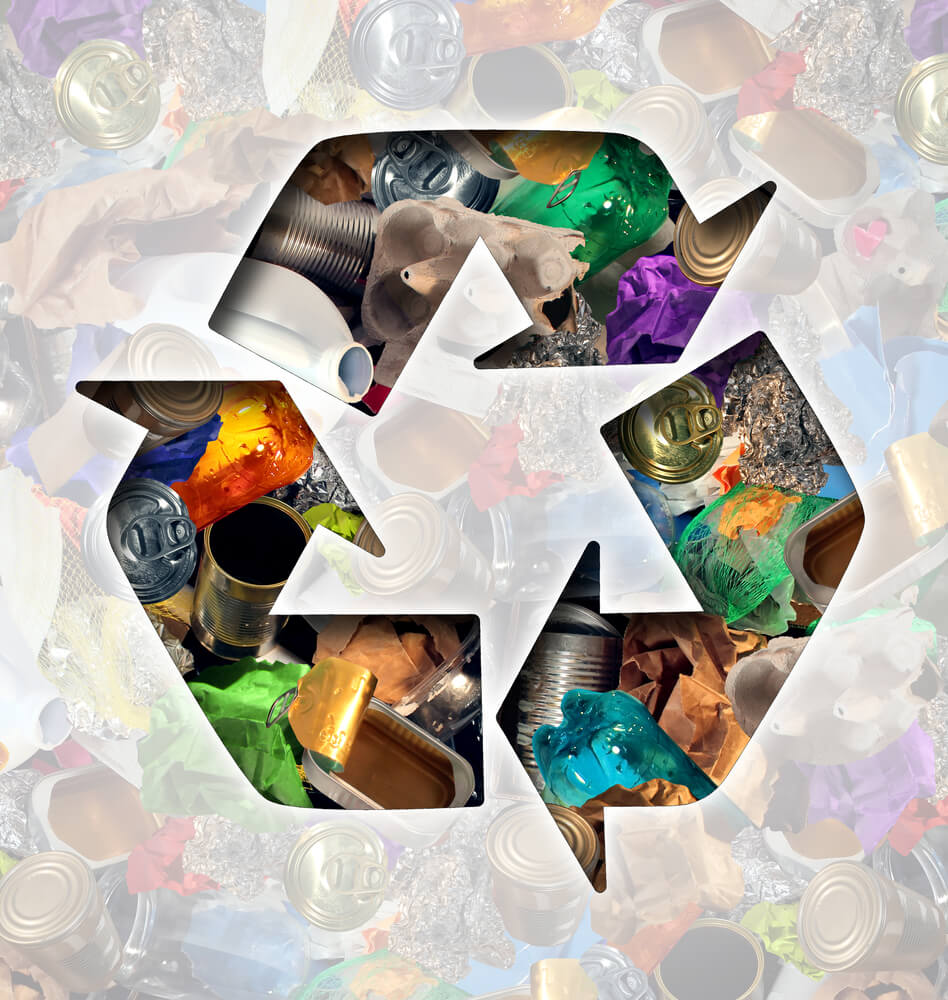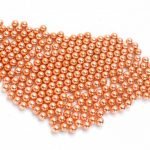Reducing carbon footprint continues to be a trend in this modern era.
You’ll hear people discussing green living everywhere you go.
Adopting environmentally friendly practices also reigns the minds of consumers.
The target is to generate biodegradable waste rather than solid waste, which severely harms the environment.
But like most solid wastes, can biodegradable waste be recycled?
No, biodegradable waste can’t be recycled. It messes up the recycling process, ruining the efficiency.
Biodegradable waste may also contaminate other recyclable items.
Here, we’ll provide all the answers you’re looking for the question; can biodegradable waste be recycled?
Let’s get started!
- What is biodegradable waste?
- What are biodegradable waste examples?
- Is there a difference between biodegradable and compostable waste?
- Can biodegradable waste be recycled?
- Can non-biodegradable waste be recycled?
- How should I dispose of biodegradable waste?
- How to dispose of biodegradable plastics?
- Are biodegradable plastics environmentally friendly?
- How to dispose of biodegradable packing?
- What is the easiest way to dispose of biodegradable waste at home?
- What is the best way to dispose of biodegradable waste safely?
What is biodegradable waste?
Biodegradable waste is “any organic matter in waste which can be broken down into carbon dioxide, water, methane or simple organic molecules by micro-organisms and other living things acting in composting, aerobic digestion, anaerobic digestion or similar processes” according to Science Direct.
These microbes often exist in different processes like:
- Compositing
- Aerobic digestion
- Anaerobic digestion
What are biodegradable waste examples?
Biodegradable waste examples include green waste, food waste, manure, vegetable and fruit peels, leaves, landscape waste, cardboard, and other materials that can break down in the environment.
These items are technically compostable as well, but keep in mind “compostable” and “biodegradable” are not the same thing.
For example, plastic is not compostable but can technically be biodegradable. However, it still takes a very long time to break down.
They include:
- Green waste
- Food waste
- Garden waste
- Landscape waste
- Kitchen waste from caterers, households, restaurants, and retail premises
- Biodegradable plastics
- Manure waste
- Sewage waste and sludge
- Slaughterhouse waste
- Human and animal waste
The period taken for the above wastes to biodegrade may not be the same.
It depends on the materials involved. Some may take a few days, weeks, months, or even years to get broken down entirely by microbes.
What is a Recyclable Material?
A Recyclable material is an old or used material that can be raw for other items.
They can undergo the recycling process or get recycled.
Recyclable materials or waste can help make other products.
For example, office papers can serve as raw materials for making toilet paper. So office papers are recyclables.
Is there a difference between biodegradable and compostable waste?
Biodegradable waste is slightly different than compostable waste.
The usefulness of biodegradable waste depends on its management.
In most cases, waste can be vegetable or fruit peels, wrapped materials, wasted food, discarded objects, etc.
You’ll first need to segregate these wastes into two groups; biodegradable and non-biodegradable wastes.
Put together all the wastes that can decompose, i.e., organic materials from plants and dead animals.
Biodegradable waste will break down in a landfill, even over time. Compostable waste typically needs a specific type of environment to break down.
Compostable materials often create a thriving environment for bacteria and soil, adding to their environments when they break down.
Biodegradable waste just means that it can eventually disappear into the land over time, but typically does not add any benefit to its environment.
Essentially, all compostable materials are biodegradable, but not all biodegradable materials are compostable.
After that, you can recycle the biodegradable waste through the following ways:
Compositing
Organic wastes such as food waste, vegetable peels, leaves, dead flowers, etc., are recyclable.
That’s in the sense that they can get converted into organic manure.
All you have to do is dig a compost pit, throw in your degradable waste, and bury the pit.
Small microbes like fungi, bacteria, and other micro-organisms will break down the waste in the presence of oxygen and heat.
The process is compositing. It results in nutrient-rich manure that improves the soil’s fertility.
Plants can use the manure formed to nourish, providing food for humans, animals, and other living organisms found in the ecosystem.
Compositing is an effortless recycling process that lets you manage biodegradable waste effectively.
Most European and United States cities have waste management facilities set up in various locations.
They aim to reduce or get rid of residential wastes in their cities. To achieve this goal, the cities have developed curbside composting programs.
If you live in these regions;
1. Contact your city’s waste management facilities
You can contact them to determine if they offer such a program. Inquire about how much they charge for the service.
Ask also if they offer indoor and curbside waste collection bins. Inquire how often the city collects the compostable material.
2. Register for the composting program
If your city offers the program, you’ll need to fill out an online form.
3. You’ll then receive composting equipment and educational resources to compost.
4. Collect your biodegradable waste in the containers
5. Avail the containers for collecting by your city’s waste
Here’s what to do if you opt to compost biodegradable waste in your home:
- Choose a suitable composting container (homemade container, compost bin, or compost tumbler)
- Arrange your degradable waste in layers inside the container during late summer or spring.
- Ensure the compost pile remains moist and well covered.
- Turn the compost pile using a pitchfork
- Add green manure to a depth of 10 inches to bury the compost pile
- Once ready, transfer your compost to your farm.
Landfills
Large dumpsites offer you another great way to manage your biodegradable waste.
That’s especially if you have greater amounts of biodegradable waste.
When you dispose of your garbage in a landfill, it will get buried. The biodegradable waste will decompose slowly.
Once the landfill is full, it can get changed into a park.
The Indraprastha Park in New Delhi sits on a landfill site.
Anaerobic Digestion
You can also convert your biodegradable waste into biogas through anaerobic digestion.
The process involves digesting the waste in an airtight container without an oxygen supply.
It is clean and a bit odor-free.The process also leads to digestate (solid material rich in nutrients) and biogas (which has CO2 and methane). You can burn the biogas to generate electricity for various domestic uses.
Can biodegradable waste be recycled?
No! Similar to compostable products, biodegradable waste can not be recycled.
It tends to muck up the recycling process, physically halting the efficiency and contaminating other recyclable items.
This can also cause the recycled products to be low quality. Recycling biodegradable waste is not the best idea if you are trying to be more conscious of your impact.
Can non-biodegradable waste be recycled?
Absolutely! Non-biodegradable waste can be recycled.
Make sure you adhere to your local guidelines for metal, plastic, and glass recycling.
Non-biodegradable waste is often one of the largest factors of pollution on earth, so it’s important to do the best you can to dispose of it safely.
How should I dispose of biodegradable waste?
Composting is one of the best ways to dispose of biodegradable waste.
Composting is an excellent way to recycle organic waste and encourage the earth’s natural recycling process.
How to dispose of biodegradable plastics?
So, what should you do with biodegradable plastics? You can often dispose of them in the trash. It’s important to try to limit your plastic usage. Even though the plastic may break down, it can still contaminate landfills for a long time.
Are biodegradable plastics environmentally friendly?
Somewhat. Most experts would argue that biodegradable plastics are not helpful to the environment, since they can take years to break down.
However, they do eventually disappear into the environment, creating less waste overall.
So, while biodegradable plastic is better than non-biodegradable, it is not the best solution for environmental health.
How to dispose of biodegradable packing?
You can tell if your product is biodegradable by a little triangle of arrows within a box.
Biodegradable packing won’t benefit the soil like compostable packing, but it will break down. You can dispose of biodegradable packages by throwing them in your garbage.
What is the easiest way to dispose of biodegradable waste at home?
If your town has a biodegradable waste bin, great! If not, the simplest way to dispose of biodegradable waste at home is to start a compost pile.
As we mentioned, compost gives nutrients back to the soil.
Combining your compost with biodegradable waste is the perfect way to reduce your waste and benefit the soil, all from your own backyard.
What is the best way to dispose of biodegradable waste safely?
You can throw biodegradable waste in the trash safely.
However, if you’d rather dispose of it in a different way, there are several options for disposing of organic waste safely:
- Composting in your yard
- Vermicomposting in your yard
- See if your city has a city-composting plan
- Donate your organic materials to local gardens or farms
Some cities will even send you a compost starter kit so you can make your very own compost pile in your backyard!
In Summation:
- You should not recycle biodegradable waste, as it can halt the recycling process.
- Biodegradable waste will simply break down over time, while compostable waste breaks down to add nutrients to the soil.
- Biodegradable does not have a timeline attached to it, meaning a material could technically break down in the environment but might take years.



